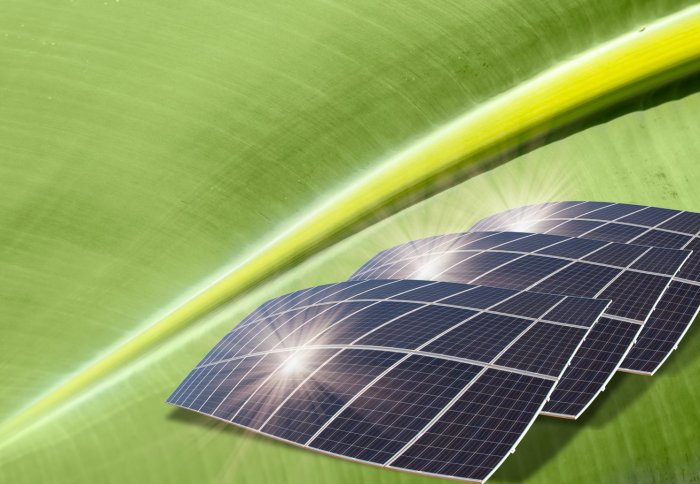

Scientists discover a process that could enhance our ability to harvest energy from the Sun for electricity and fuels.
A process to enhance the performance of solar technologies such as solar cells and photocatalysts, and potentially make their production cheaper, has been discovered by scientists.
Solar cells take energy from the Sun and convert it into electricity. But energy from the Sun can also be harnessed to create other fuels such as hydrogen, which could be used for example in cars. These ‘solar fuels’ are produced by mimicking photosynthesis, the process used by plants to create energy from sunlight.
Solar fuels could help tackle climate change, as they can be created without producing carbon dioxide, a greenhouse gas. They could also directly replace fossil fuels in many applications.
However, photosynthesis is complicated process, and there are several challenges to its replication. One of these challenges is that catalysts – materials that help the reaction proceed – are often expensive and inefficient, preventing the process from being easily scaled up.
In a new study, published in the journal Advanced Materials last week, researchers from Imperial College London and Queen Mary University of London (QMUL) demonstrate that a unique property of the material barium titanate could lead to more efficient solar cells and catalyst systems.
Excited species
Barium titanate displays ferroelectric behavior, which means it can create strong internal electric fields that can dramatically change its electronic properties. In this study, the scientists exploit the potential of these properties for new approach to harnessing sunlight to make electricity and fuels.
Artificial photosynthesis relies on splitting water into its constituent parts, hydrogen and oxygen. The researchers discovered that when light strikes the barium titanate, it causes electrons to separate off and move inside the material, in a process called charge separation. During this state, the electron is known as an excited species.
After a while the species will lose the energy and lose its excited state. Many species are only excited for a very short span of time, but the excited species in barium titanate last much longer – comparable to how long it takes for water to split into hydrogen and oxygen.
This means that materials such as barium titanate could make a much more efficient catalyst for producing solar fuels using artificial photosynthesis by supporting the splitting of water.
“Charge separation induced by light is a key challenge for solar energy conversion,” said co-author Professor James Durrant from the Department of Chemistry at Imperial and Director of the Centre for Plastic Electronics.
“These results demonstrate that the intrinsic properties of a ferroelectric material can be remarkably effective at driving this charge separation. It shows they have the potential to enhance the efficiencies of a range of solar cell technologies, including in particular recently developed hybrid perovskite-based solar cells, and in the developing field of artificial photosynthesis.”
exciting step forward
Co-author Professor Steve Dunn from QMUL’s School of Engineering and Materials Science added: “This is a really exciting step forward in our understanding of the way in which functional, in this case, ferroelectric, materials interact with light. It enables us to design new catalysts and make the most of the long-lived light-excited species that we have shown exist.”
The research builds on previous work from the team, which showed that applying sound waves to zinc oxide materials could result in increased photovoltaic performance. The team discovered that sound, including music, could be used to increase the output power from solar cells that were made from nanorods of zinc oxide and a light absorbing polymer.
The study is funded by the Engineering and Physical Sciences Research Council through the Centre for Doctoral Training in Plastic Electronics and by the European Research Council.
-
‘Effect of internal electric fields on charge carrier dynamics in a ferroelectric material for solar energy conversion’ by Madeleine R. Morris, Stephanie R. Pendlebury, Jongin Hong, Steve Dunn and James R. Durrant is published in Advanced Materials.
Supporters


Article text (excluding photos or graphics) available under an Attribution-NonCommercial-ShareAlike Creative Commons license.
Photos and graphics subject to third party copyright used with permission or © Imperial College London.
Reporter
Hayley Dunning
Communications Division

Contact details
Tel: +44 (0)20 7594 2412
Email: h.dunning@imperial.ac.uk
Show all stories by this author
Leave a comment
Your comment may be published, displaying your name as you provide it, unless you request otherwise. Your contact details will never be published.




Comments
Comments are loading...